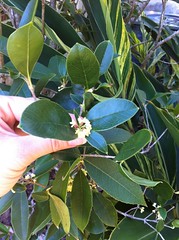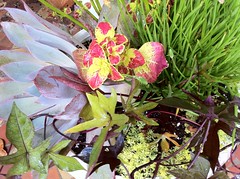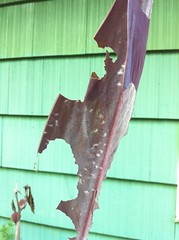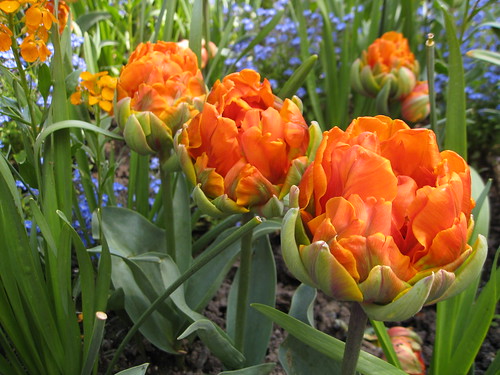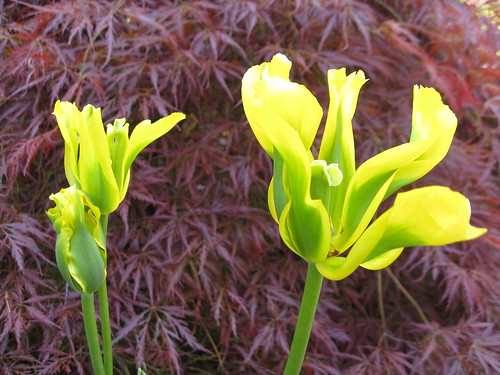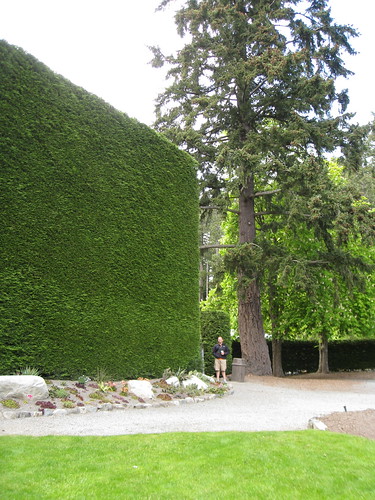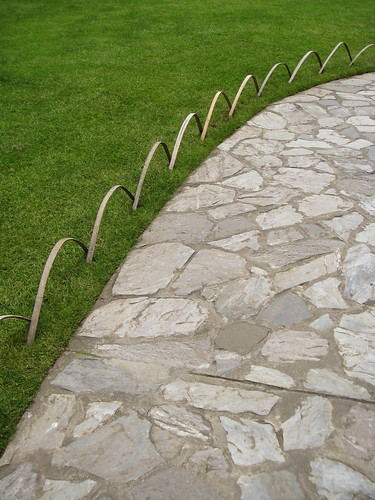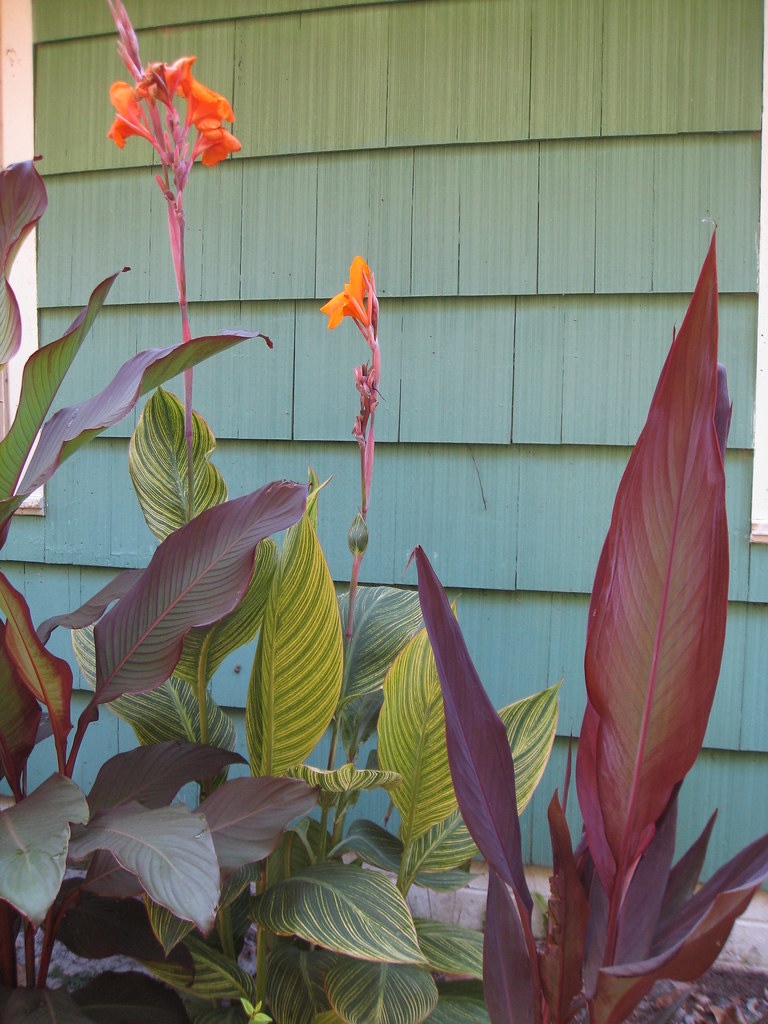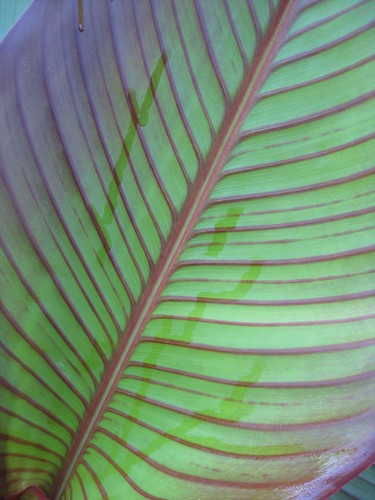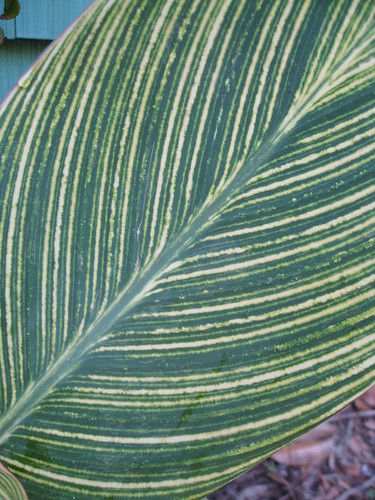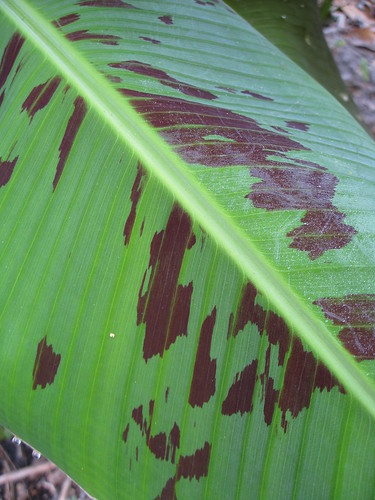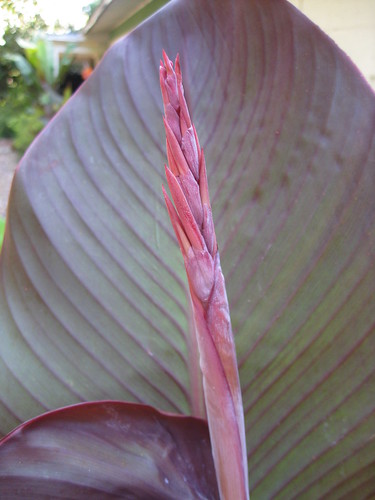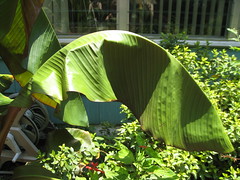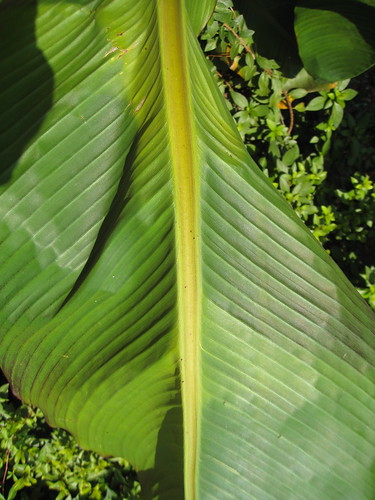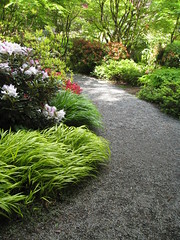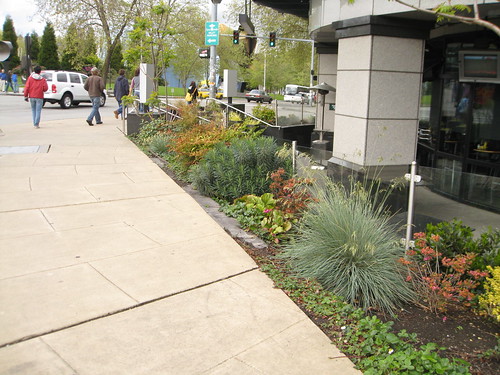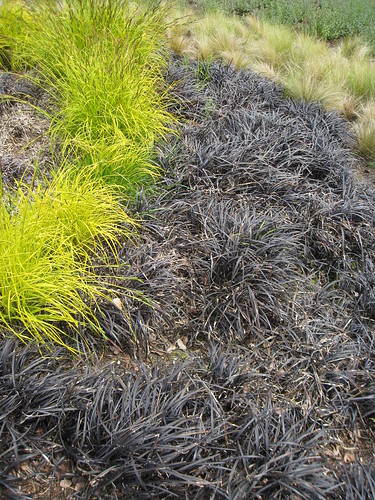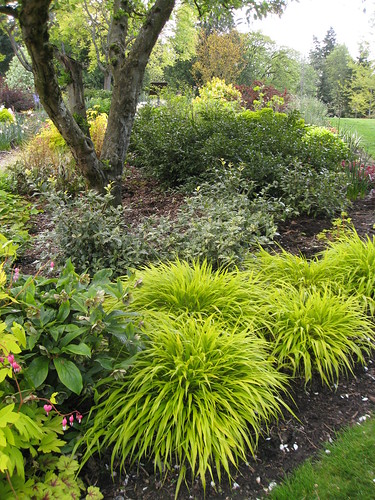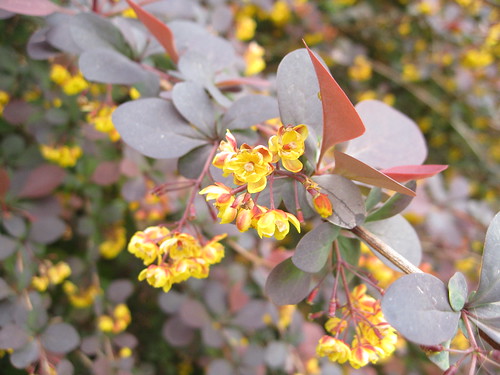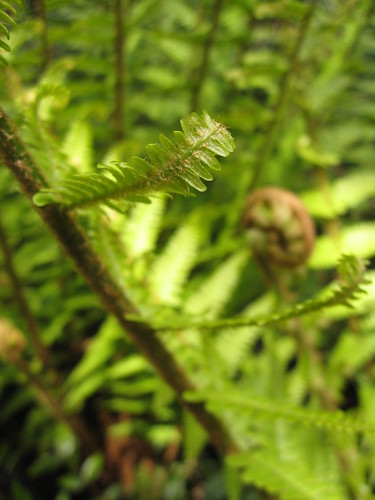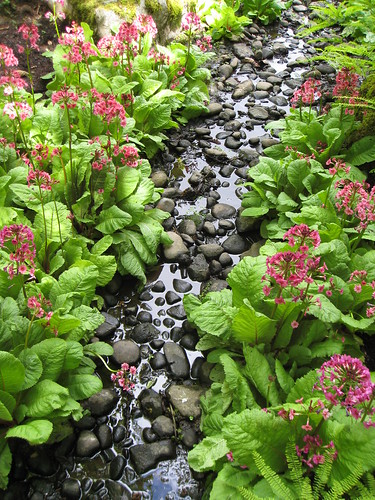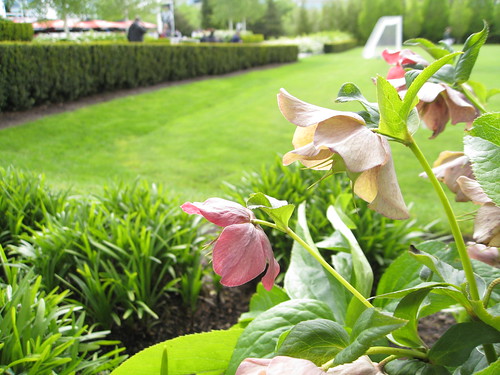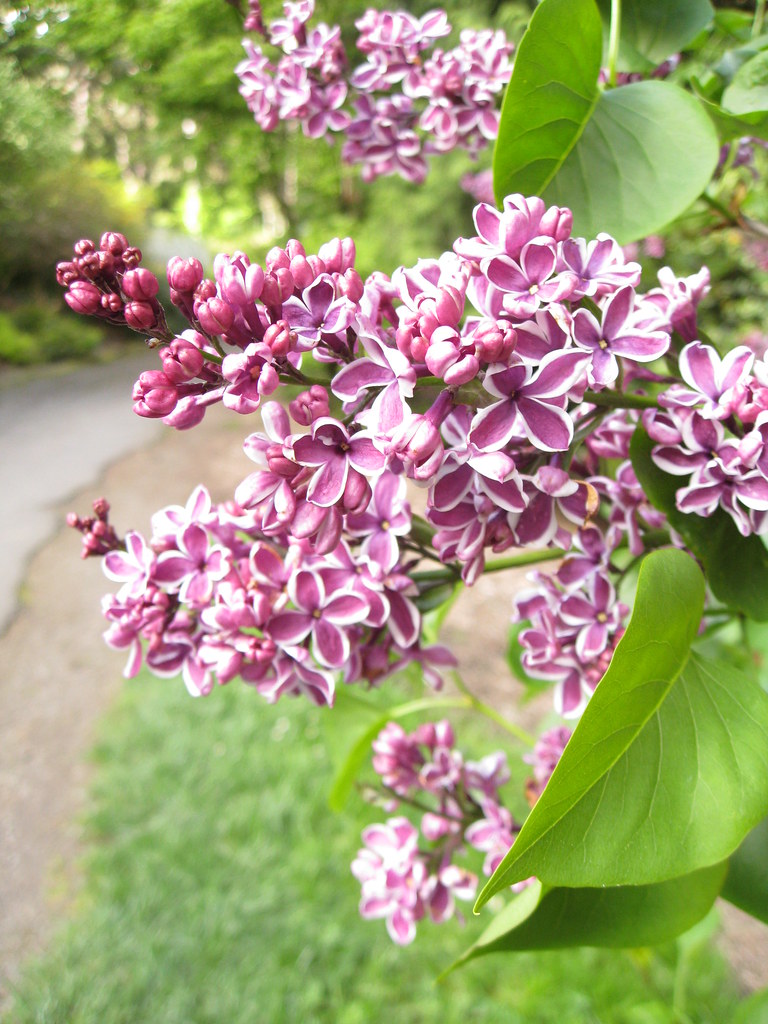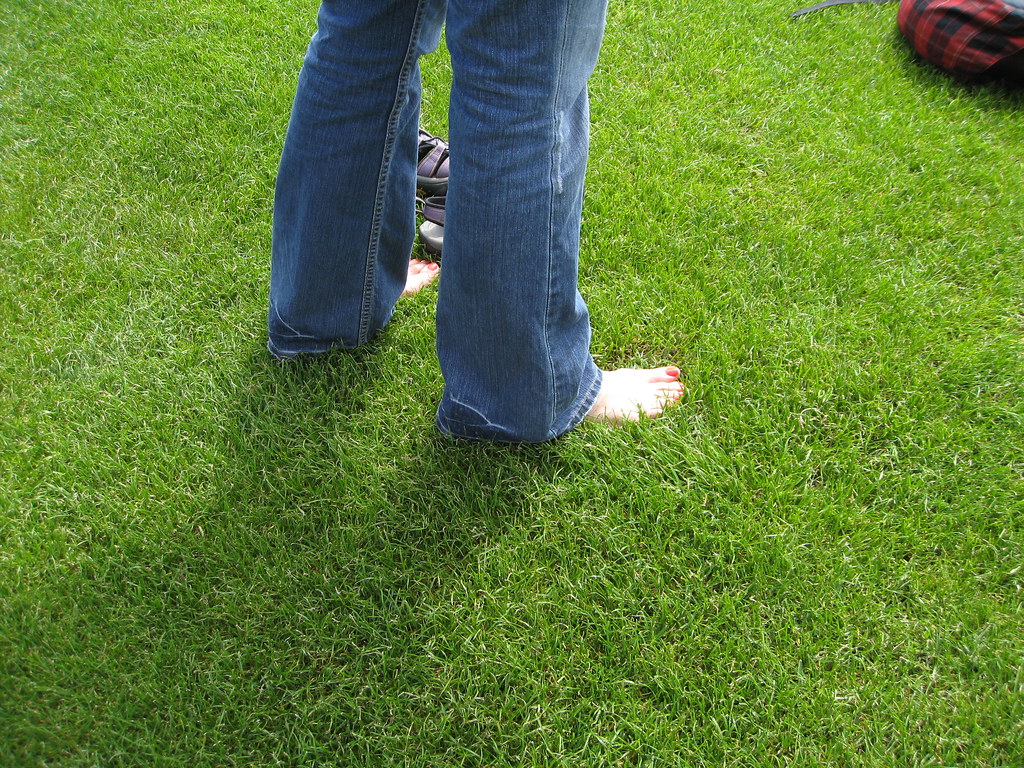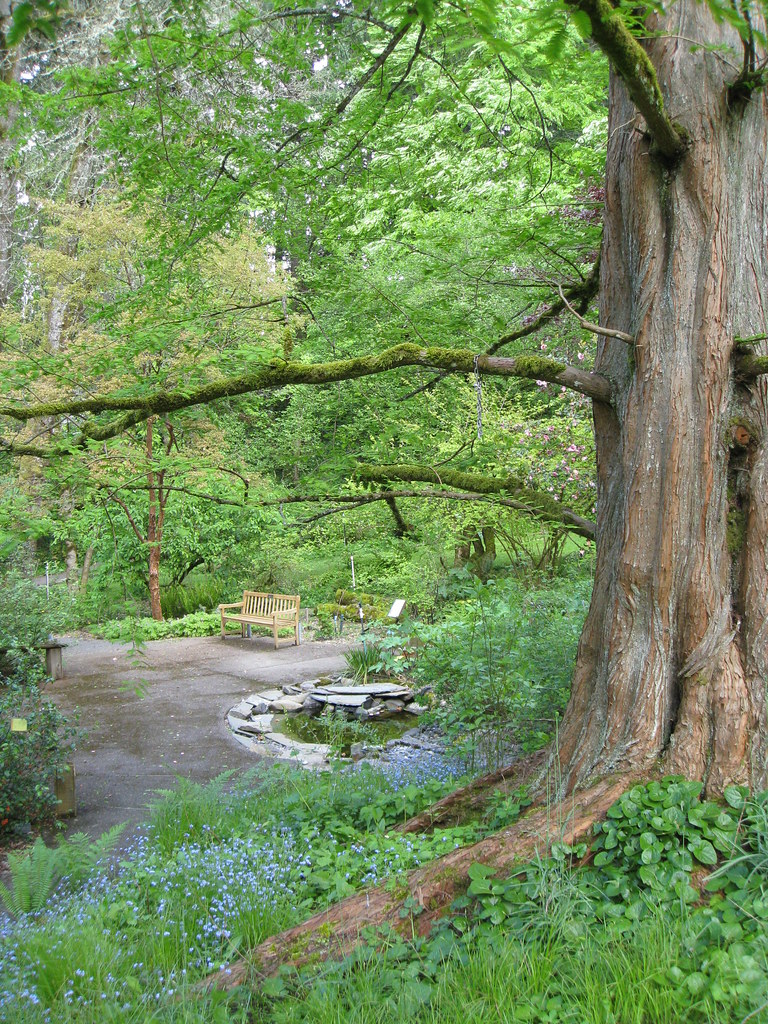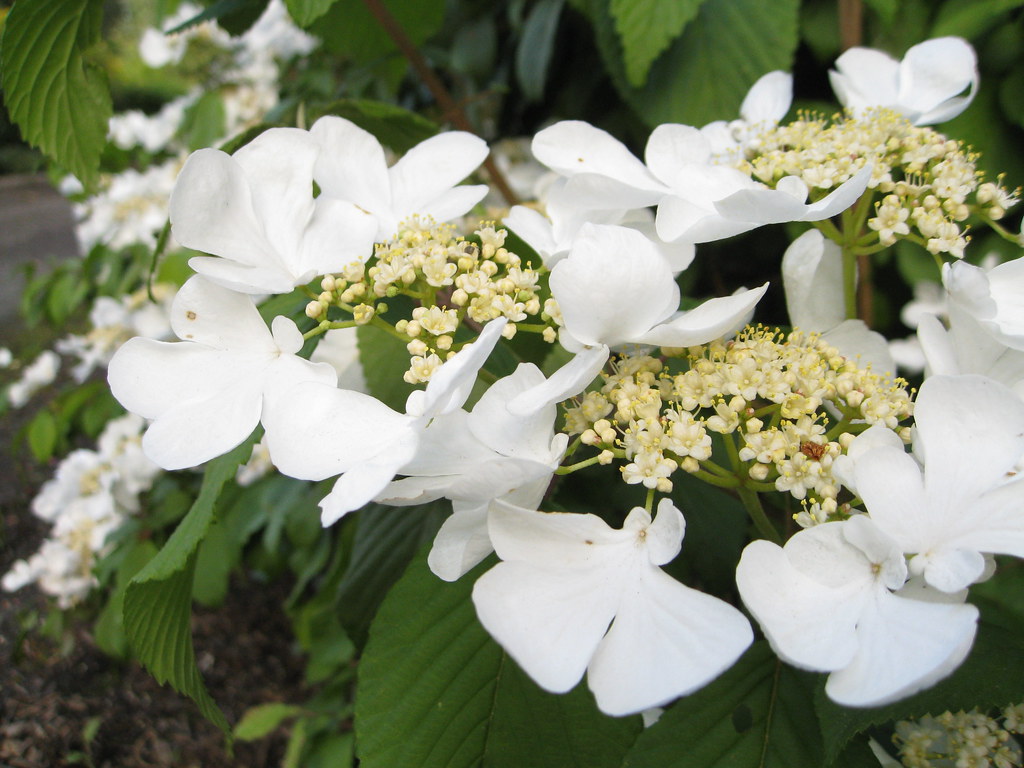Here's the second post about my recent trip to the Pacific Northwest. After
spending time in Portland, we made our way up to the Seattle area. Our first stop was in Renton at the Virginia Mason Athletic Center, aka Seattle Seahawks practice facility. As you all know, I'm much more interested in plants than I am in turf, but even I enjoyed this stop.
We got to peek in the indoor practice field which was HUGE. Nike was filming a commercial of some sort while we were there, so we had to sneak in between takes. The outdoor practice fields had a great view of Lake Washington, but it was pretty overcast that day so my pictures aren't that great.
We got back on the bus and headed up to Seattle and met Nolan Rundquist, the
city arborist, for a walking tour of the city. It was really interesting to hear about all of the challenges his team faces trying to grow trees in an urban setting. Here's a shot of us on the tour. Of course I just had to put up this particular photo because of the Dahlia Lounge sign, given
my love for dahlias.
The euphorbias that we saw all over the city were amazing. I wish we could grow these here in Florida, but I've heard that they're prone to powdery mildew.
I really loved the color and texture combinations in this bed.
The next day we got a tour of Qwest Field where the Seattle Seahawks play, and a tour Safeco Field where the Seattle Mariners play. I have to say, it was pretty freakin' cool to get to walk on the fields. I mean, how many times do most people get do that? Plus, I've been a big baseball fan since I was a kid, so this was a real treat for me. Here's one of my favorite shots looking down the third base line at Safeco Field.
But y'all want to see pictures of plants, right? Fear not! The plant jackpot came when we headed up the road to
Bellevue Botanical Garden. It was a delightful garden full of all sorts of fabulous plants in stunning combinations like this one, which I think was a gold sedge and
Ophiopogon nigrescens. I'd love to come back and see this garden as it changes from season to season.
Check out this beautiful Japanese forest grass (likely
Hakoenechloa macra 'All Gold'). Isn't it beautiful? Sadly, I've also heard that this one won't thrive here in Florida. Sigh.
I loved this
Cotinus for its striking contrast between the foliage and the flowers. I'm wondering if we can succesfully grow smokebush in Florida. My trusty
Southern Living Garden Book says it can be grown as far south as Georgia, but I'm thinking that Florida might be a little too warm for it.
The garden also had tons of ferns, and I've been a sucker for ferns ever since college. They're so primitive and yet so fascinating!
We also saw lots of primroses throughout our journeys in the Pacific Northwest. This was a fairly new plant for me.
Well, that's all for now. The final installment will include the photos I took when we went up to Victoria, British Columbia and visited
Butchart Gardens. If you've never seen photos of Butchart, you're in for a treat. I promise the next post will be chock full of bold plant combinations for all of you daring gardeners!
